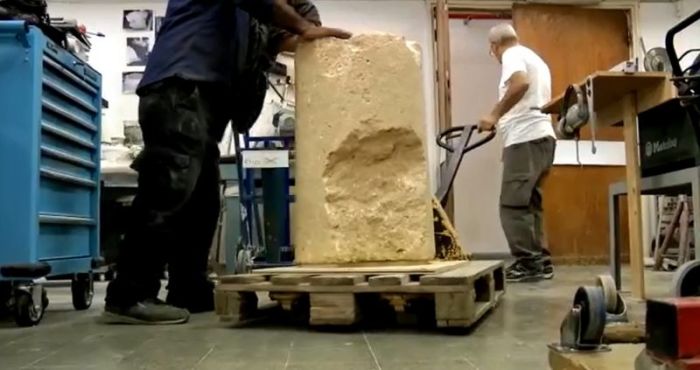Archaeological Discovery: 2,000-Y-O Artifact With Jerusalem Inscription Echoes Bible

A significant archaeological discovery of a stone artifact with the full Hebrew spelling of "Jerusalem" dating back 2,000 years ago was revealed on Tuesday.
The Israel Antiquities Authority and the Israel Museum, which announced the discovery in a press release, explained that the stone inscription dates back to the Second Temple Period, or the first century C.E., and spells Jerusalem the same way it's spelled today.
Yuval Baruch, Jerusalem regional archaeologist of the Israel Antiquities Authority, and professor Ronny Reich of Haifa University, who read and studied the inscription, explained the biblical significance of the find.
"First and Second Temple period inscriptions mentioning Jerusalem are quite rare. But even more unique is the complete spelling of the name as we know it today, which usually appears in the shorthand version. This is the only stone inscription of the Second Temple period known where the full spelling appears," they said.
"This spelling is only known in one other instance, on a coin of the Great Revolt against the Romans (66–70 CE). The unusual spelling is also attested to in the Bible, where Jerusalem appears 660 times, with only five mentions — of a relatively late date — having the full spelling (Jeremiah 26:18, Esther 2:6, 2 Chronicles 25:1, 2 Chronicles 32: 9, and 2 Chronicles 25: 1)."
The inscription was originally found in the winter of 2017 during an excavation near the Jerusalem International Convention Center.
Researchers found the foundations of a Roman structure supported by stone columns. The Hebrew inscription in question, which appears on the stone column drum, and dates back to the time of Herod the Great, reads in full: "Hananiah son of Dodalos of Jerusalem."
"As a resident of Jerusalem, I am extremely excited to read this inscription, written 2,000 years ago, especially when I think that this inscription will be accessible to every child that can read and uses the same script used two millennia ago," said professor Ido Bruno, director of the Israel Museum.
"The important and interesting cooperation between the IAA and the Israel Museum, brought to light in the handling and display of new finds, provides an opportunity for the public to be exposed to important discoveries from all over the country, learning about the ancient cultures that developed in Israel over generations," Bruno added.
Dudy Mevorach, chief curator of archaeology at the Israel Museum, added that it's not known who Hananiah son of Dodalos was, or where the inscription was originally displayed.
"But it is likely that he was an artist-potter, the son of an artist-potter, who adopted a name from the Greek mythological realm, following Daedalus, the infamous artist. It is interesting that he decided to add his origin from nearby Jerusalem to his family name," he offered.
Two other finds attesting to the development of Jerusalem 1,500 years ago were also announced, relating as well to the mass pilgrimage of Christians to Israel in the time period.
They are namely a Greek mosaic inscription from the sixth century CE that commemorates the construction of a public building in the city, likely a hostel. Another inscription commemorates the construction of the Nea Church by the Byzantine Emperor Justinian I, also in the sixth century.
From The Grapevine pointed out that excavations have been taking place in the area for many years, and have been uncovering extensive portions of a potter's quarter, which is believed to have made vessels for Jerusalem for more than 300 years.




























